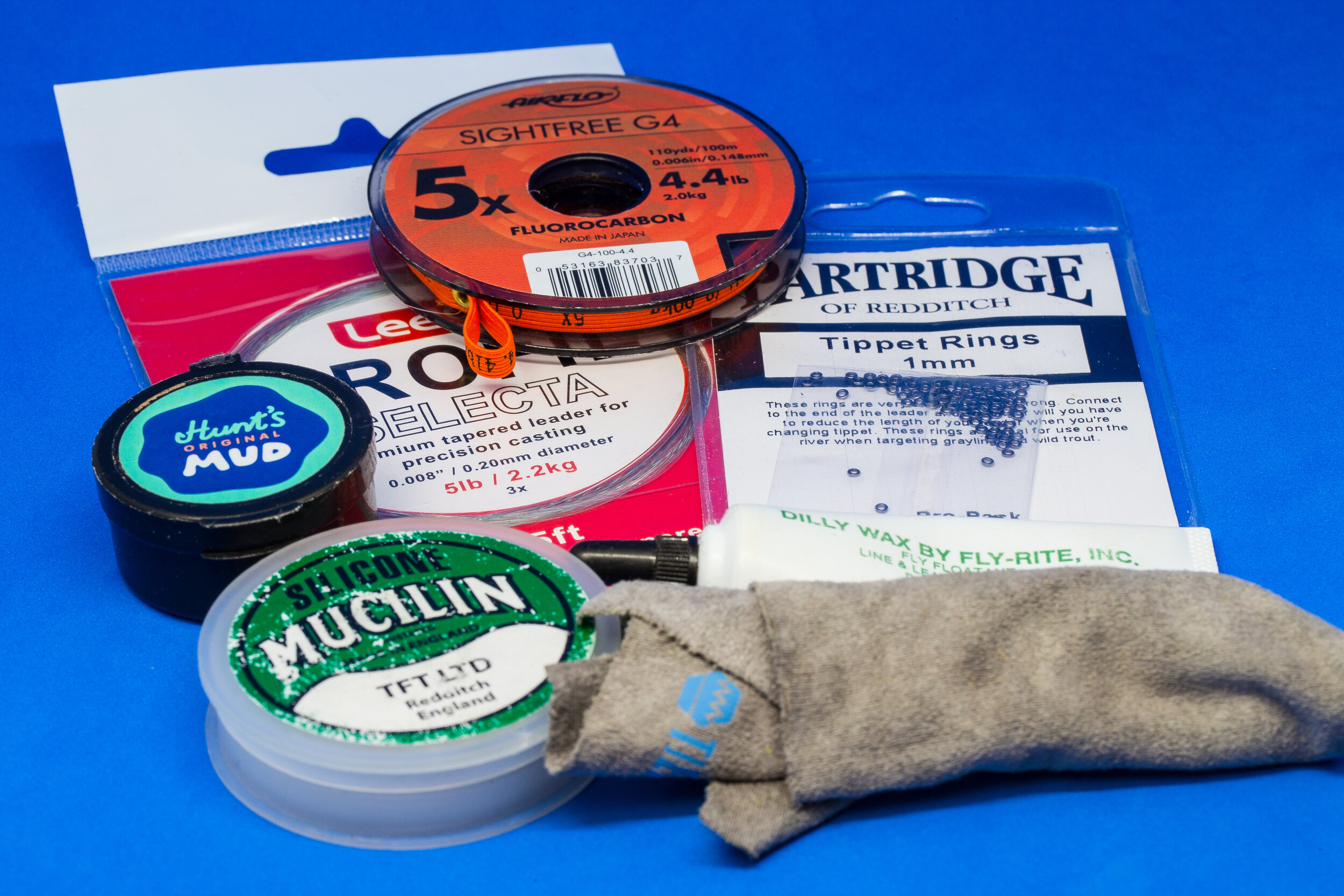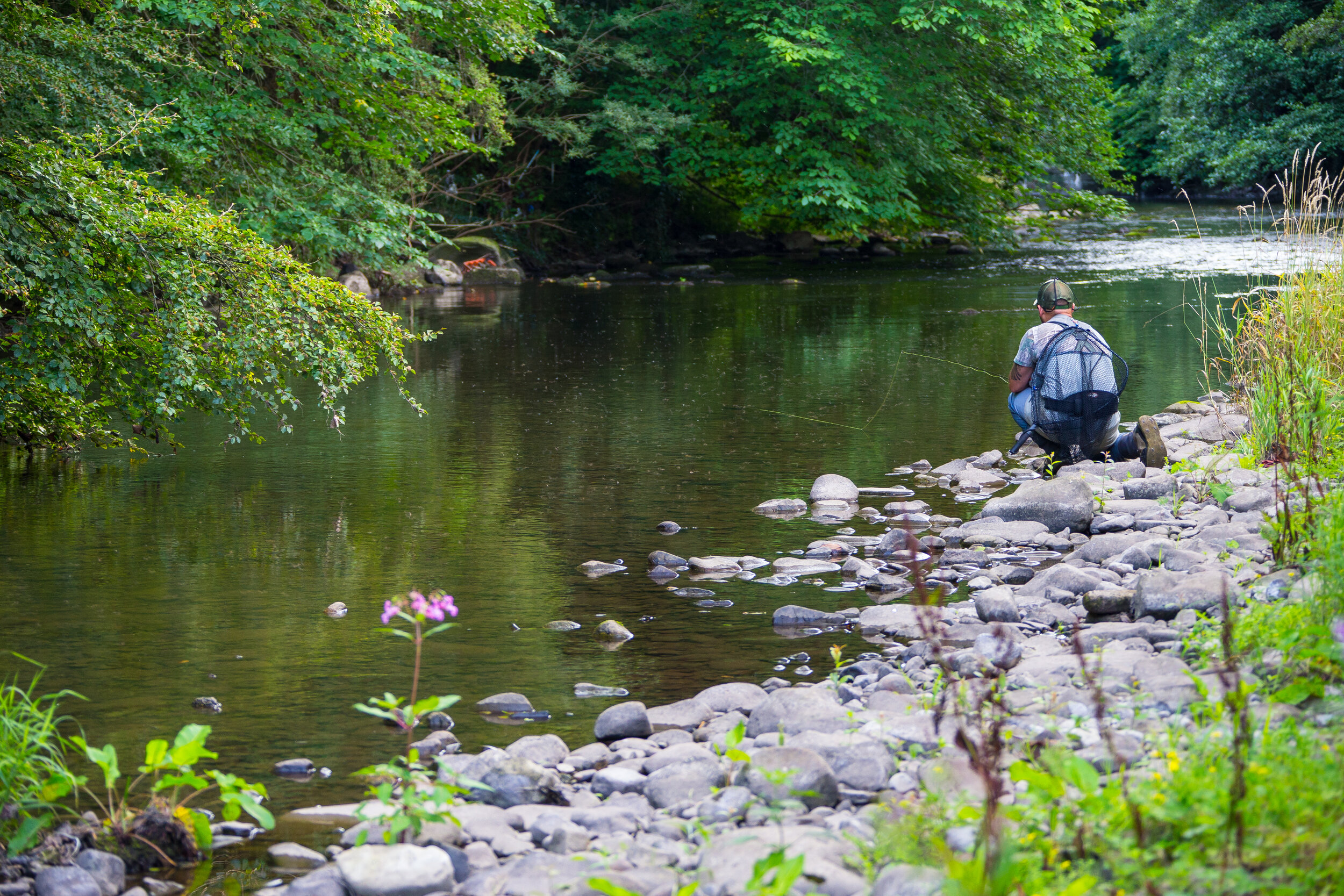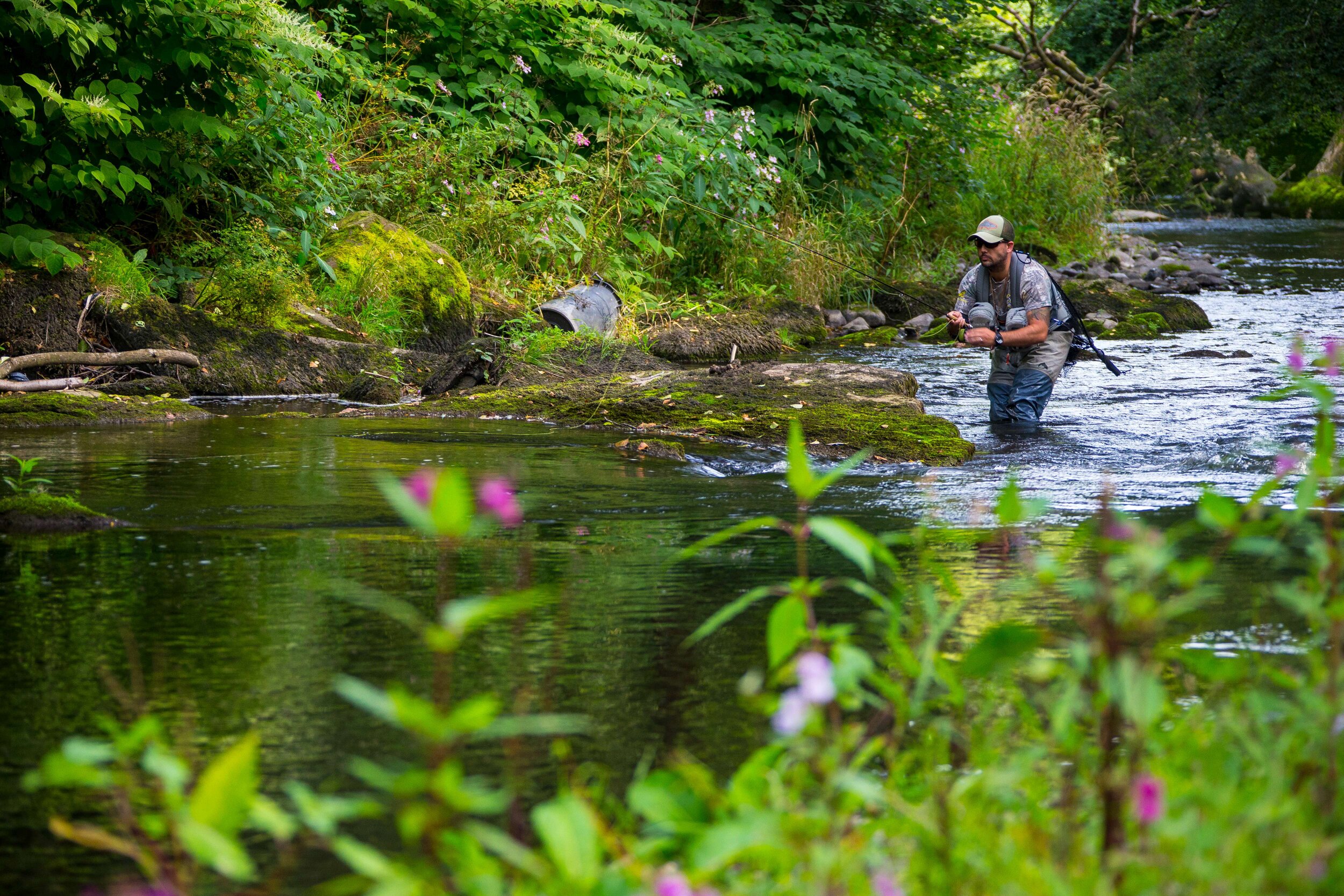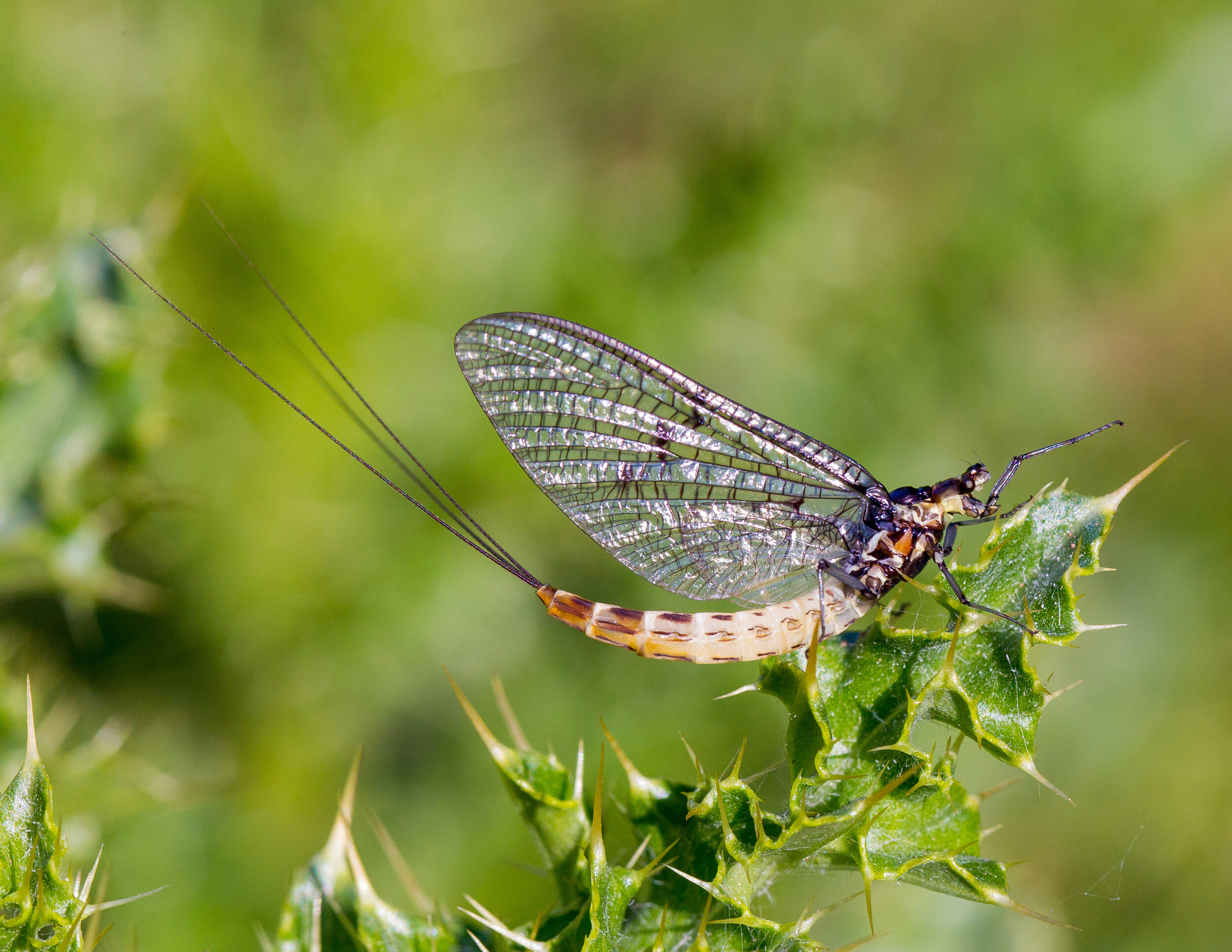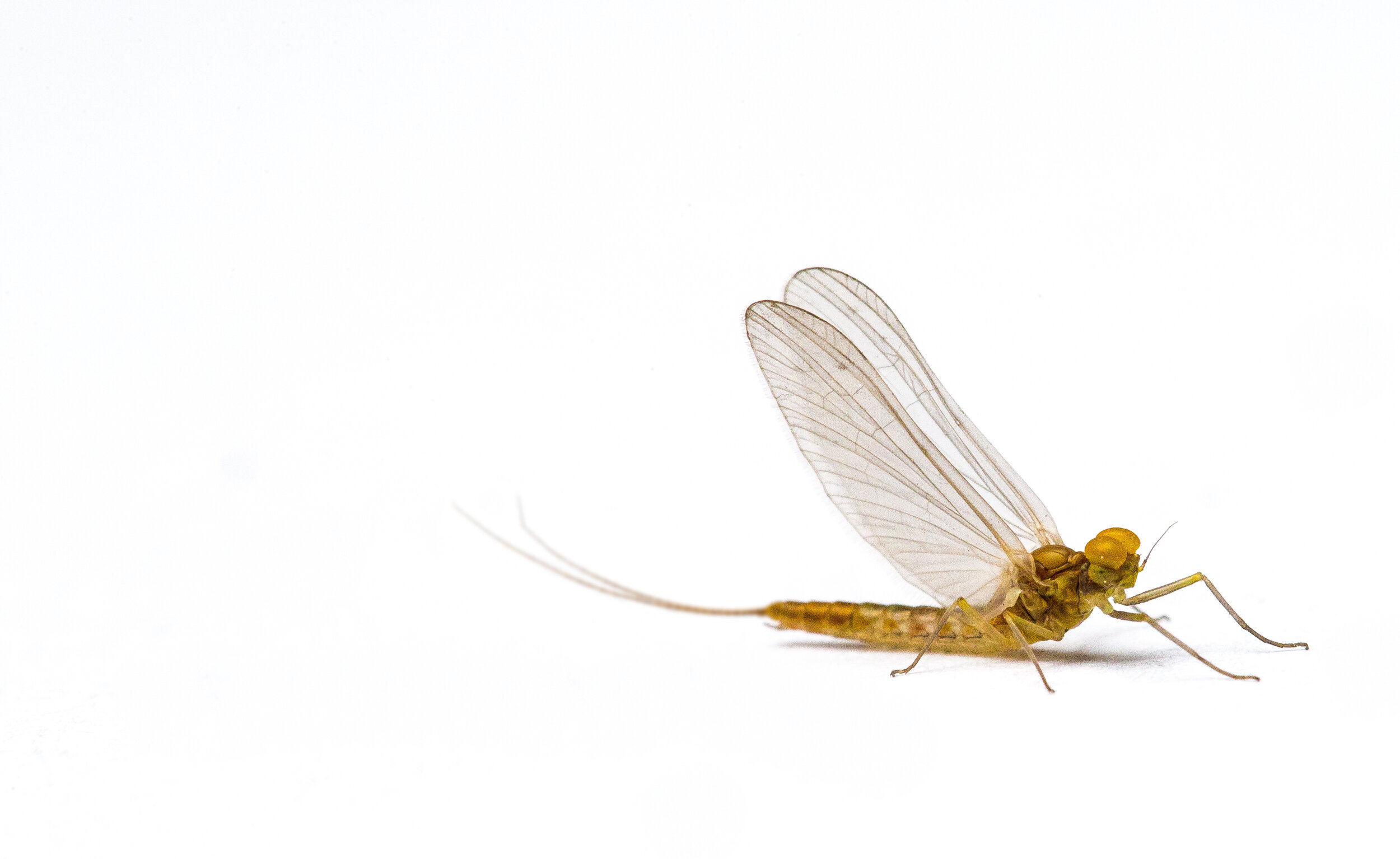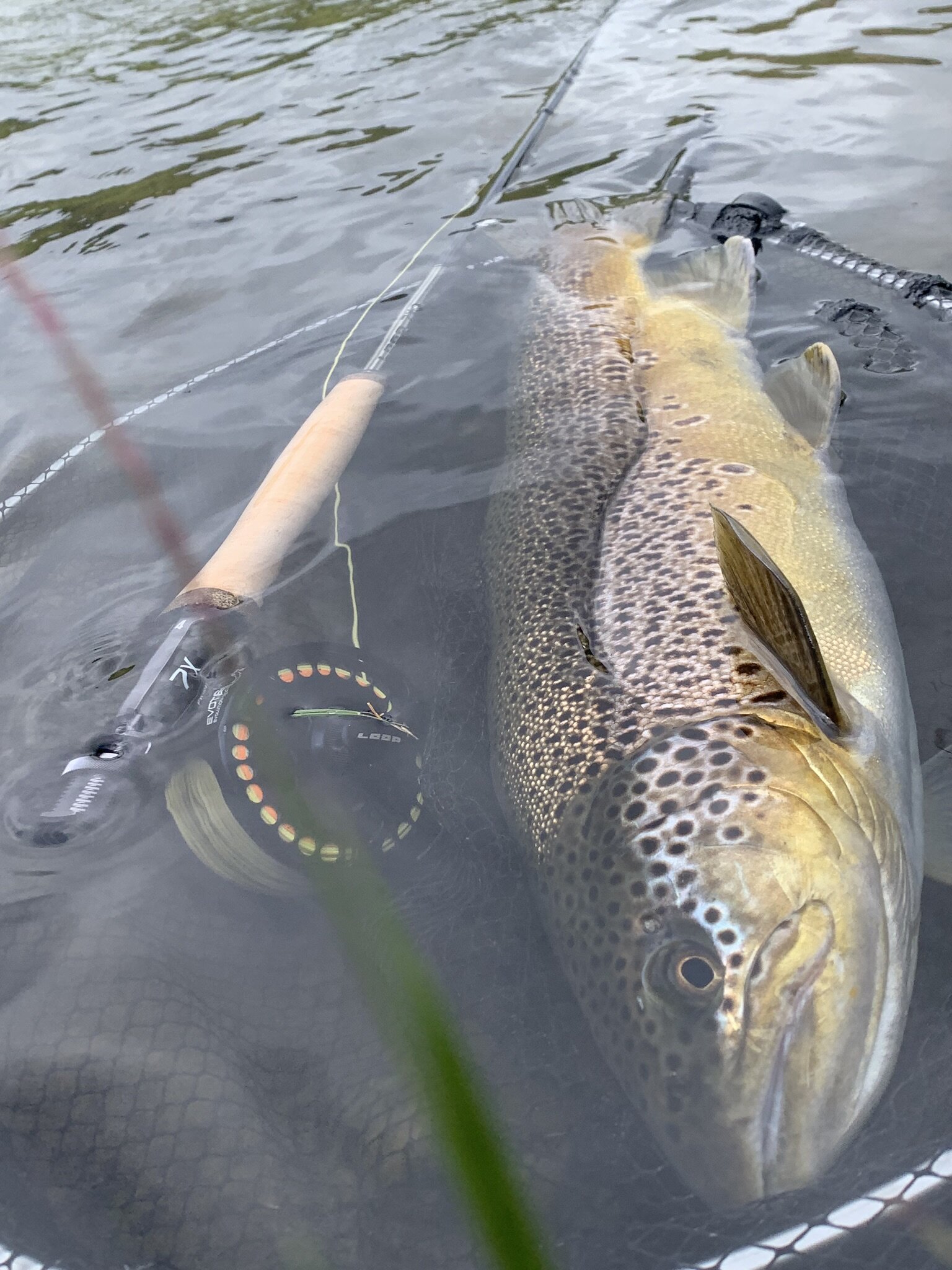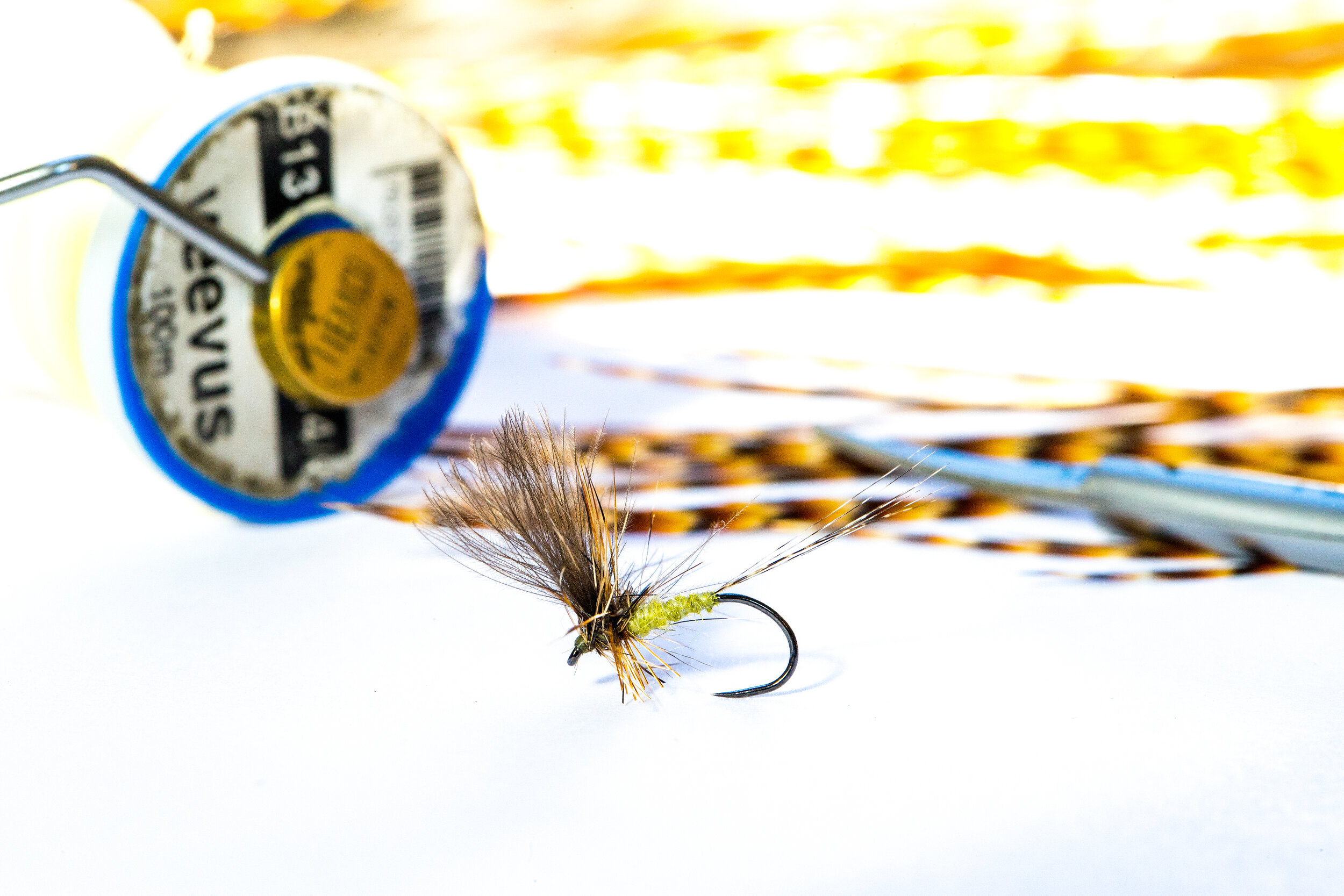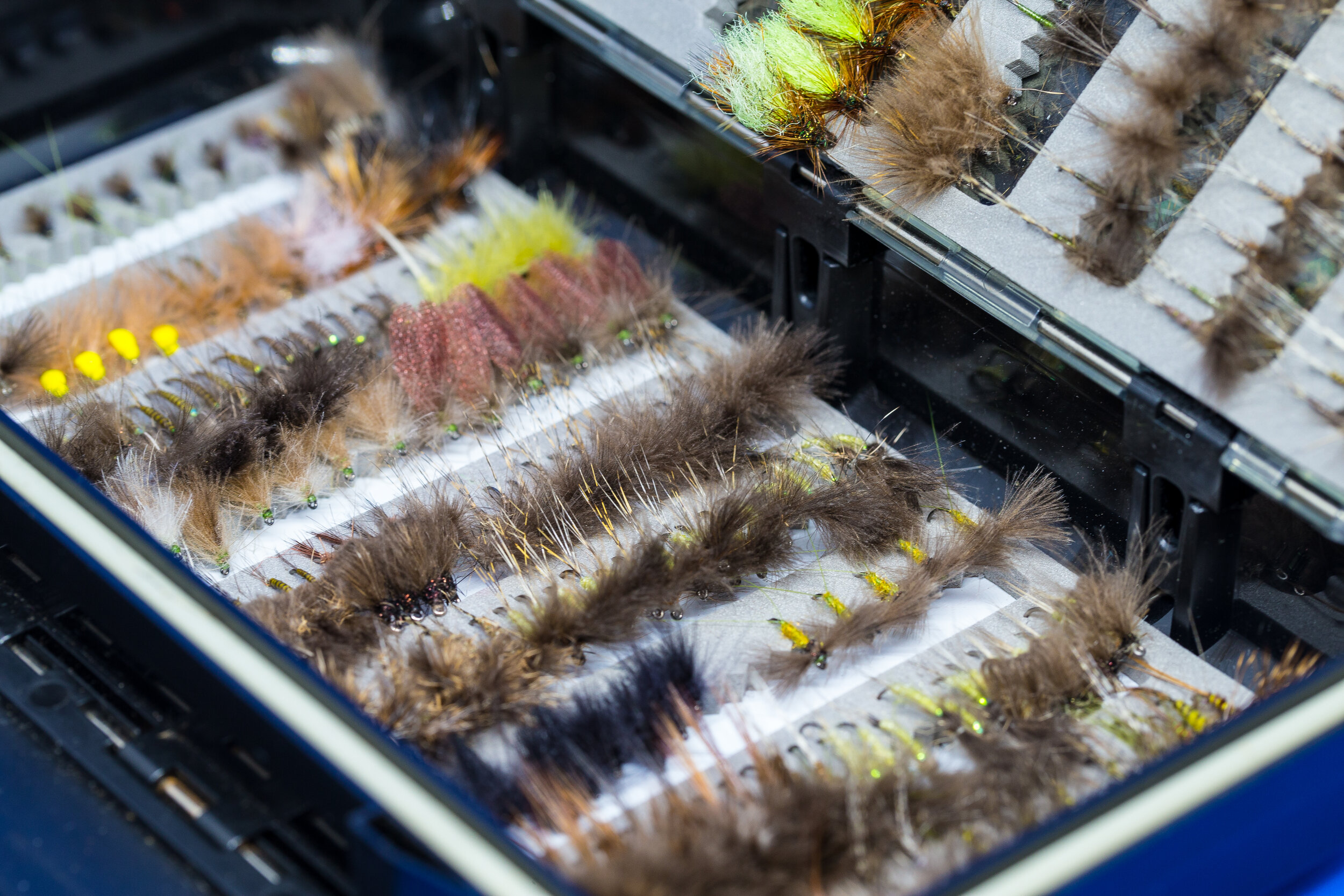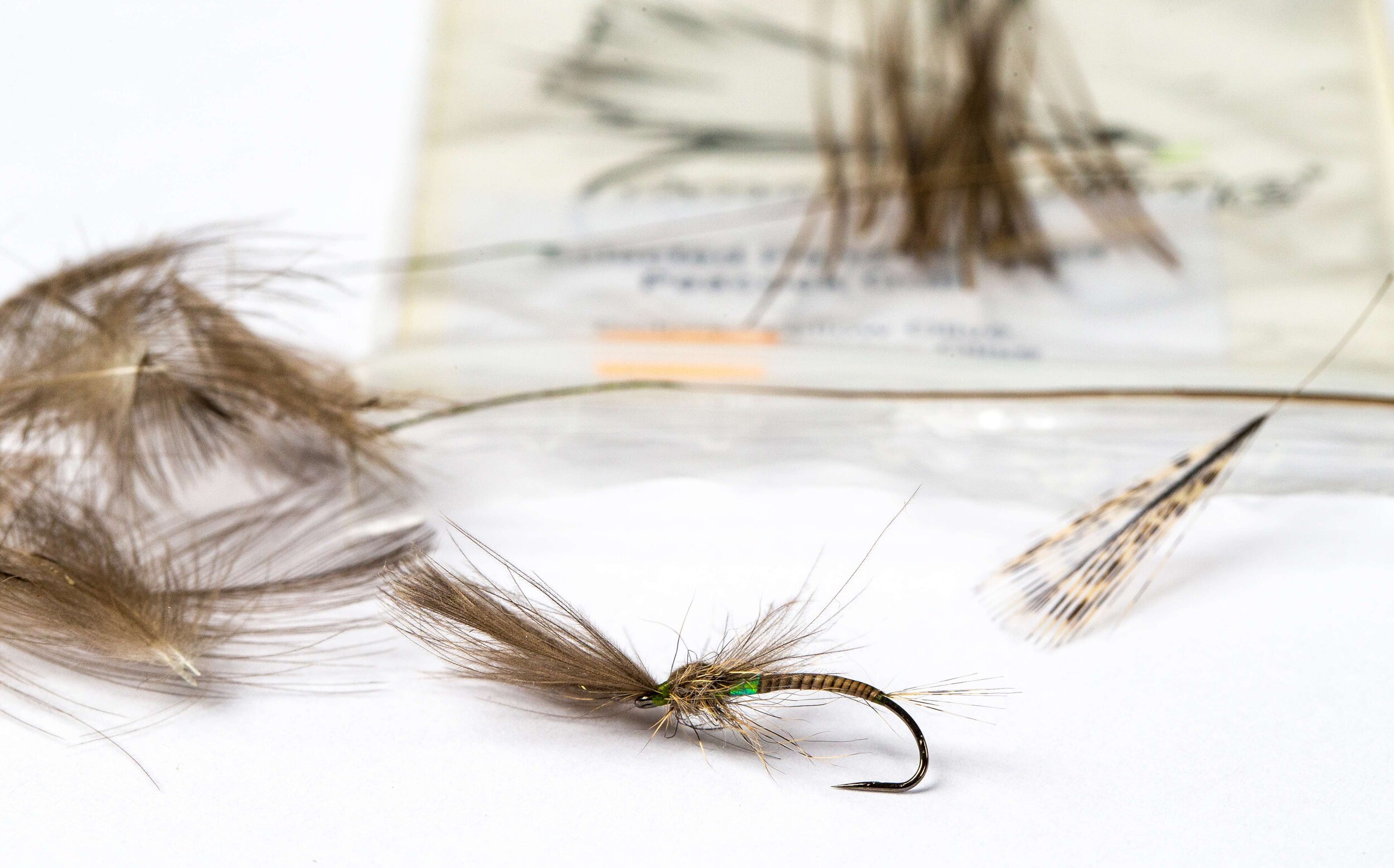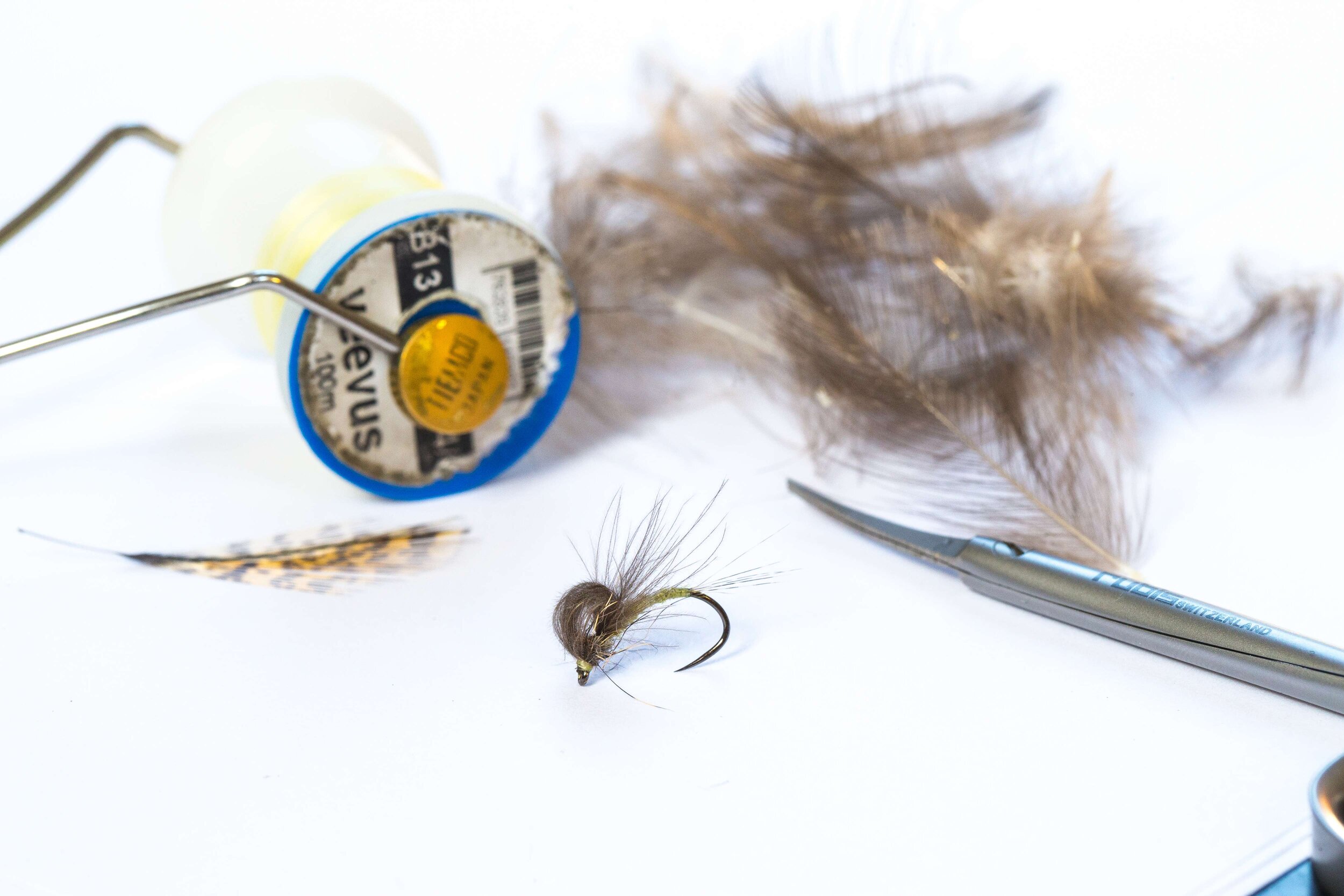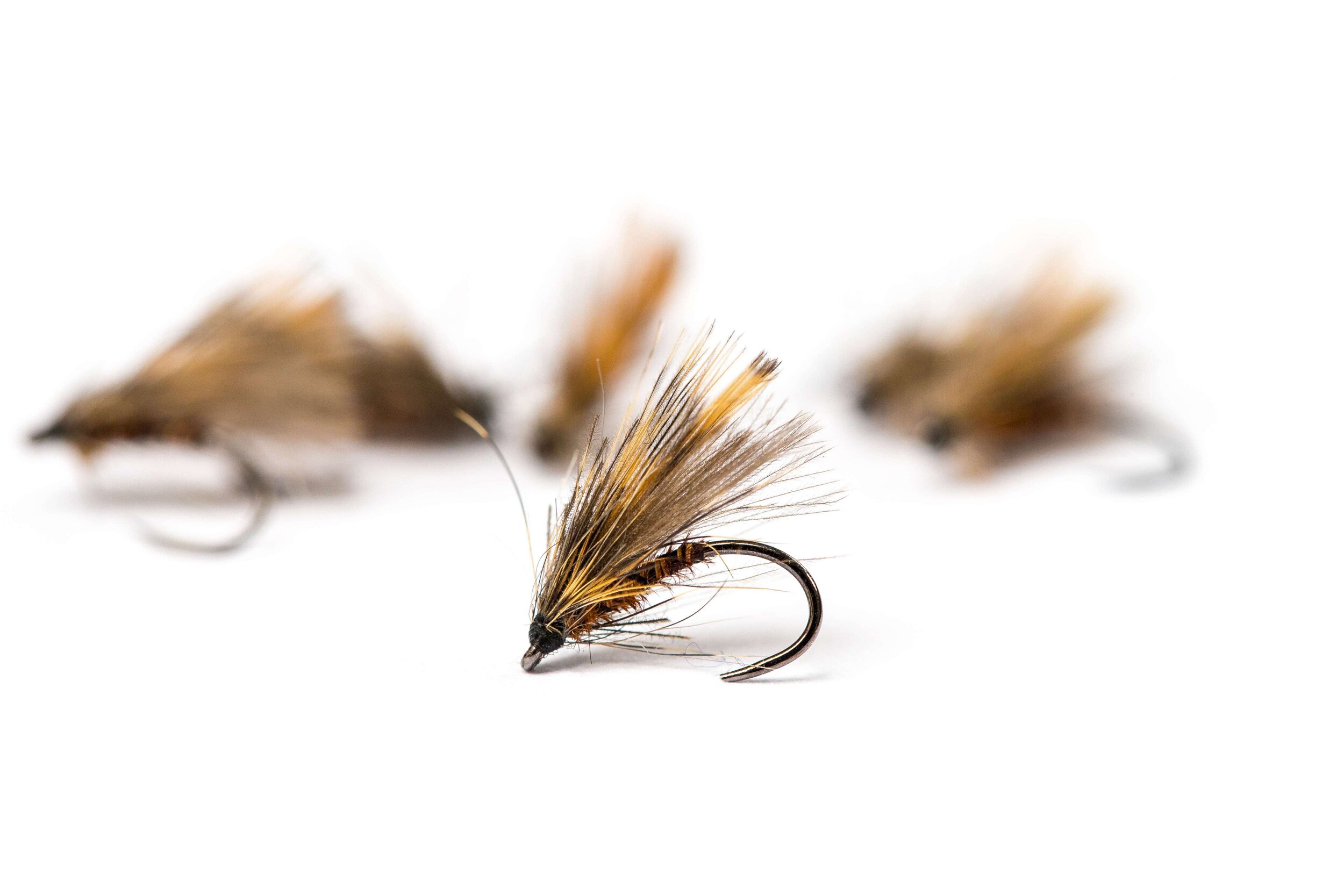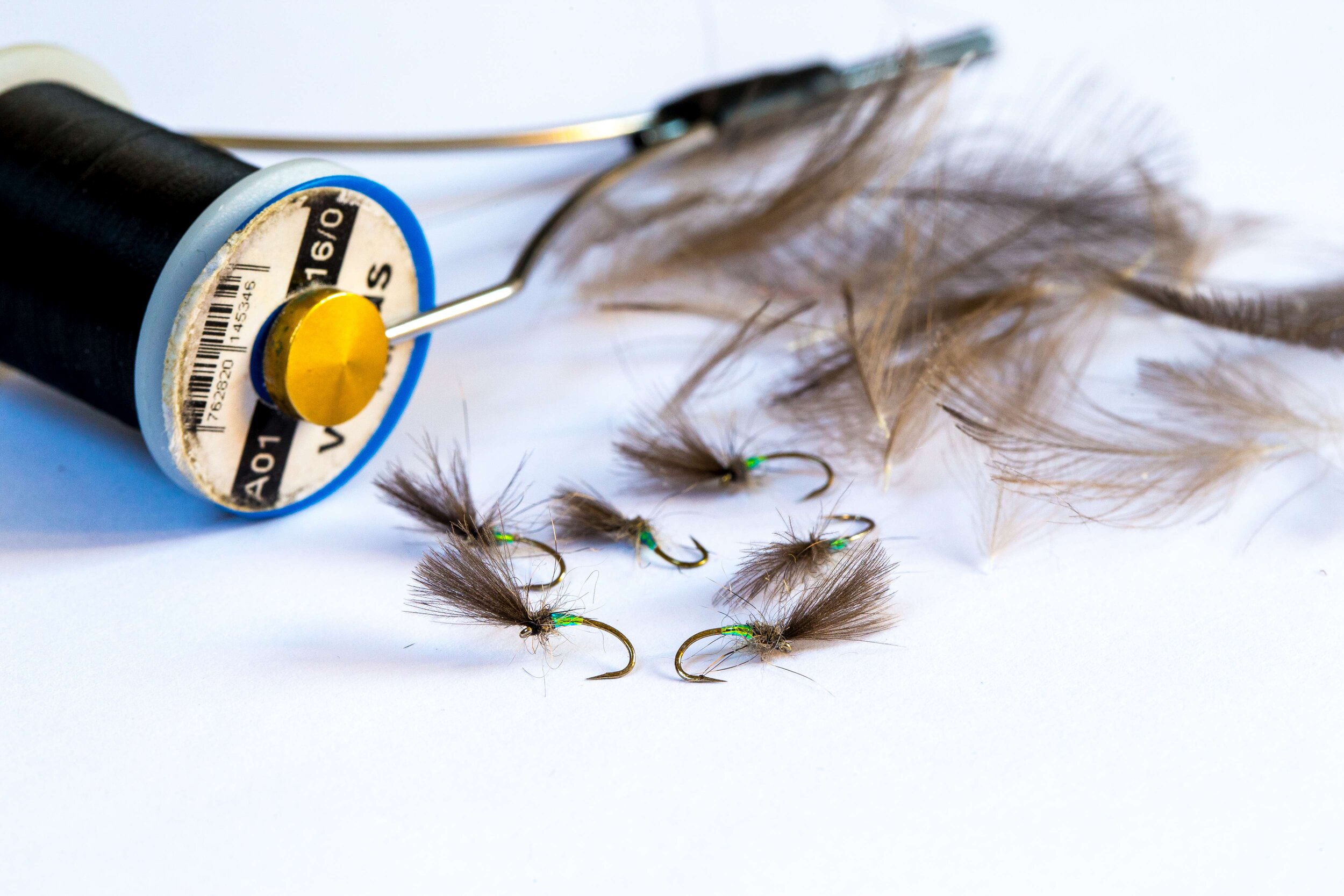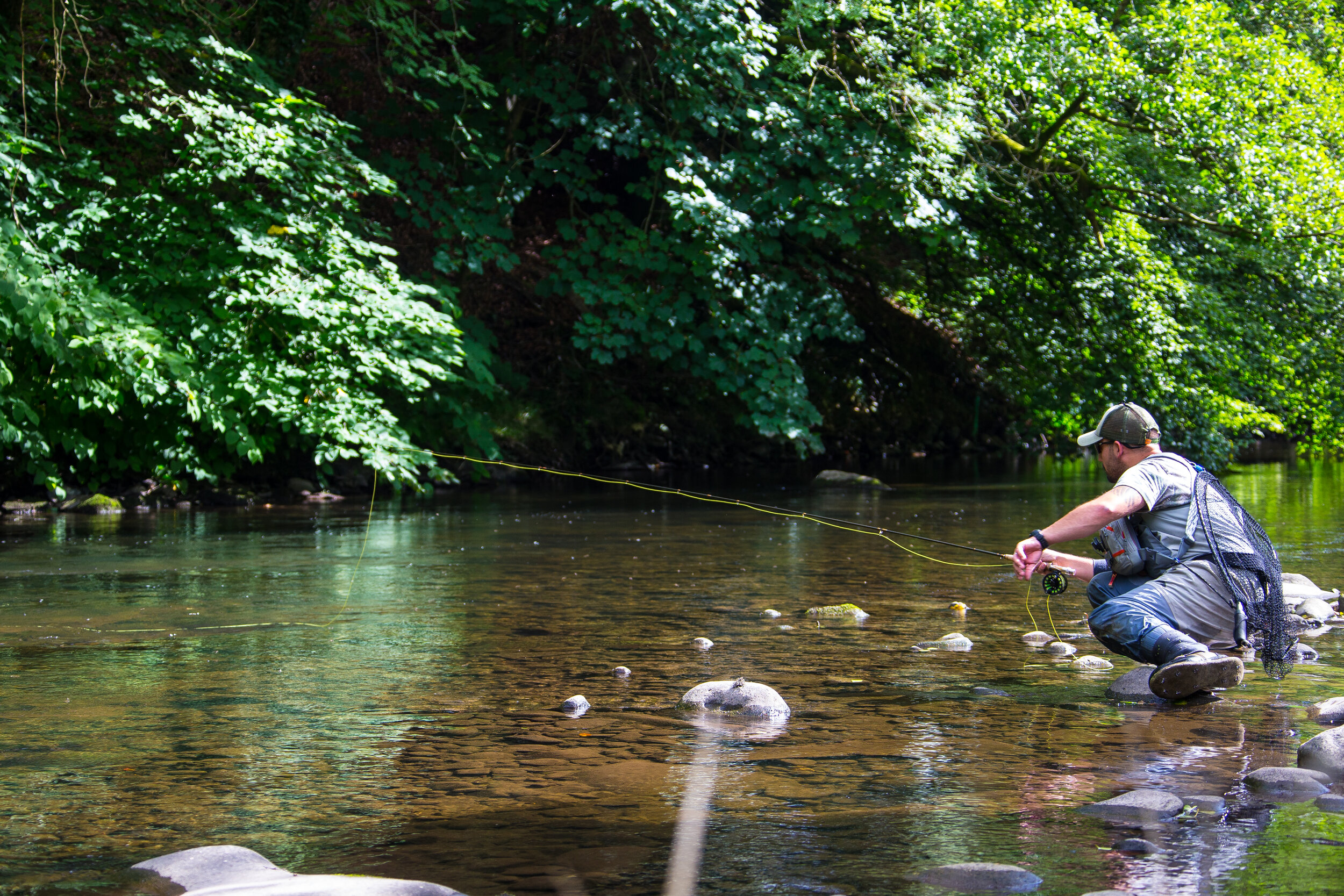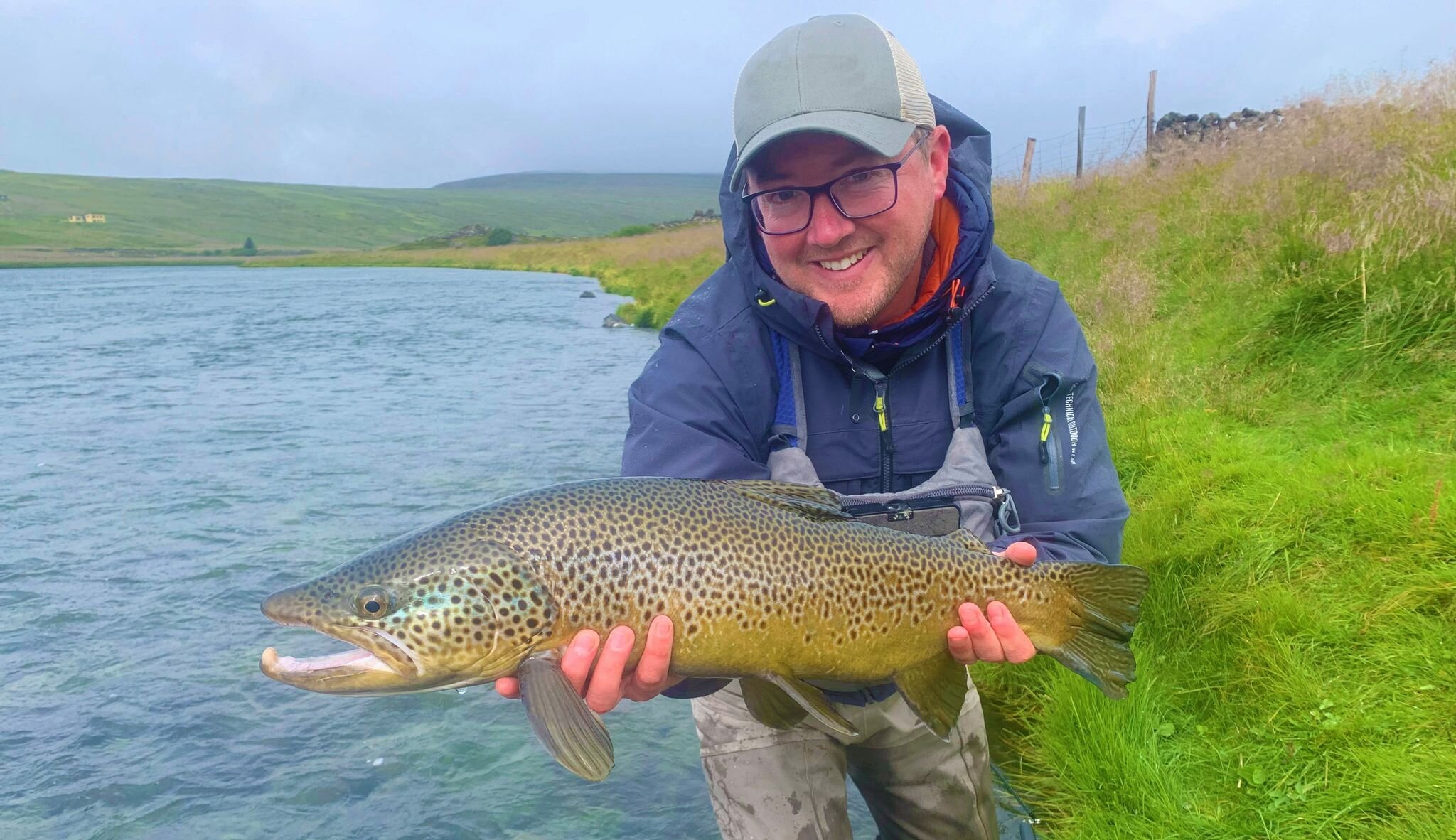
Steffan Jones
Photos Steffan Jones
1. Choice of equipment Rods, reels, fly lines, fly floatants, clothes, glasses and other useful items.
There is truth in what suits one person may not suit the next. As such, I won’t go into detail about rods and reels etc. other than to say; try before you buy whenever possible and then make sure the reel has a smooth drag – that is a prerequisite, especially when dealing with fine leaders.
I personally prefer pretty fast rods for dry fly fishing, which may not suit everyone, especially beginners – they are not as forgiving and, in general, things happen a lot quicker. My go-to would be a #4 and this has served me well all over the world when dry fly fishing for trout. However, again, this is a case of ‘horses for courses’ and can largely be determined according to the size of the river and the size of the fish to be targeted.
Fly lines; I don’t tend to overload or underload. There are arguments for both. I tend to fish a line that loads nicely, even over shorter distances (which is likely to be more often than not) then fish a very long leader (as long as the conditions and bankside structure allows, with 18-20ft being common). Having a line that loads well helps me turn over long leaders and I prefer to have this and be able to control the leader, rather than controlling the line too much – it is easier to hold / support a thinner leader without sag over shorter distances than a fly line, which may start sagging and create drag.
Clothes; I prefer to blend in, but to be honest your approach is far more important than garment selection. Stealth is key, especially for wary fish.
Items I would not be without; a fly drier (personal preference is a Tiemco Fly Kerchief), Mucilin, Hunt’s Mud and then a floatant. On the floatant front I don’t use powders, preferring gels/liquids, even on cdc. My two favourites are Dilly Wax and Tiemco Dry Magic.
2. Leader material, build up, length and knots.
I have some really complicated leader formulas. I used to build the main part of the leader from various diameters of Maxima Chameleon, then adding on the tippet section, which was invariably fluorocarbon – don’t fall into the fallacy of fluorocarbon sinking faster. Yes it does, but this is not detrimental in finer diameters, as it is really difficult for it for break the surface film / tension in the first place. I much prefer fluorocarbon for the tippet, as I prefer the extra abrasion resistance etc. it provides.
Nowadays there are some superb tapered leaders to choose from, and these are the ones I now opt for as I prefer them over the hand made ones that have multiple knots. My two favourites are the Maxima Knotless Tapered Leaders in 12ft or the Leeda Profil ones in 15ft. In both instances I choose ones with heavy breaking strains (6 lbs or so), for the simple reason that I then taper them further with my tippet material according to what I am doing. This may be a further one step or two step taper. For example, ending the tapered leader in 0.20mm or so, then adding 0.15mm or so. The connections would always be made with tippet rings, which I have utmost faith in and they also allow the main tapered leader section to remain as new.
My favourite knot and the one I have great faith in is the Double-Davy. It’s a really small, quick knot and has served me well.
3. Approach and stealth.
Approach and stealth are of paramount importance. Sit back and make a plan before executing the plan. If it’s a wary fish, then chances are it’s game over before you even step into the water if you don’t.
Watch the rise form. Look at the surrounding cover to work out casting angles and approach angle. You are hunting / stalking a single fish, not casting wildly in sheer hope.
There is no one approach that is correct, other than it needs to be stealthy. The fish will dictate the approach and angle. Personally, whenever possible I like to approach from the side and slightly below, rather than from directly below etc. as I prefer this casting angle in terms of drag, but also there’s less chance of bumping other fish into your target fish compared to wading up from below.
Knee pads are a must, especially when approaching wary fish. Keep a low profile, avoiding silhouettes. Also, sometimes it is a waiting game for the fish to regain confidence with knee pads making the wait more comfortable.
4. Reading the water.
Time spent watching is never wasted. Try and get an understanding of the current a long time before the cast is ever made. Watch leaves or bubbles coming down – the path they take will give you great insight into what your leader is likely to do.
Also look for where the fish is likely to head once hooked. Have an exit strategy.
If you’re blind fishing then think like a fish. They are going to look for structure, safety, feeding lanes etc. This will help you spend your time wisely rather than just casting aimlessly in a speculative manner.
5. Casting ability; which casts are essential ?
Don’t get too caught up in the casting. Your approach and working out your casting angle will serve you far better. Work on your position rather than working on a long and creative cast. My casting would be overhead, basically, but the angles varied according to the bankside vegetation etc. where a side cast would be better. In tight spots a jump roll is useful, as is a bow and arrow cast, but more often than not it is an overhead cast of some description.
Line control is far more important than the cast itself and this can start before the line lands on the water. A reach cast, which is not really a cast but an aerial mend, is really useful, for example. Work on rod position and delivery, which is basically trying to alleviate drag. Alleviating drag is my main concern, not a pretty cast.
6. Entomology, what should we know.
An understanding is a must, but a degree is not! Being able to understand what is hatching when, then identify certain hatches when fishing 100% holds you in better stead.
Fish can get locked onto a certain hatch and it can be infuriating if you cannot identify the hatch. Beyond that, you can read into it as much as you like, but something around the right size and the right shade will usually do the trick.
There’s a great phone app named ‘MatchAHatch’ which is free to download and 100% recommended. Beyond that, there are some great books to be had.
7. Rise forms Can they tell us something?
You can almost tell what a fish is feeding on, or what stage of the hatch the fish is feeding on, before actually seeing any insects on the water or in the air. This is, however, really difficult to teach and is about spending time on the water. Look at the position of the fish, how far is its range? How often does it feed? Is it just sipping, full on head and tail, splashy rise? Etc. a lot to factor in before actually studying the water’s surface for clues.
Don’t get caught out on seeing a given fly in abundance and automatically assuming that is what the fish is feeding on. You must spend some time watching and unlocking the puzzle to gain the reward at times. However, that is what makes it fun.
8. Fly selection, size, shape, materials, which flies are essential, favourite fly.
I have a handful of patterns that cover a myriad of hatches. They are my go-to patterns that I have faith in and largely vary the size according to the hatch rather than changing the pattern itself. The same pattern in multiple sizes can absolutely cover multiple hatches, especially if small shade adjustments are made and even then I’m not convinced that it’s that important.
I am a big fan of emergers. The simple reason being that they are safe food items for the fish to intercept – basically they are less likely to fly away if the fish decides to expend energy to intercept. Emergers also double for the crippled flies; both often being the main item of choice. Same applies to spinners, which are, again, trapped in the surface film and not going anywhere, therefore making a safe item to intercept.
9. Upstream or downstream?
There is no one or correct answer. The fish will always dictate this and, sometimes, the wind! Work out your plan according to the position of the fish, the currents, the wind, the bankside obstacles etc. then approach accordingly. This may be from upstream, downstream or across. Again, given a preference, across and from slightly downstream would be my preference, for reasons already covered.
10. fighting fish.
What I have noticed a lot over the last few years is some form of bragging rights or anglers thinking their clever for catching a big fish on light leaders. Don’t get me wrong, sometimes a light leader is needed, but more often than not the failure will be down to the approach and also the presentation rather than your leader not being fine enough. Even if the fish is hooked on the light leader, what then? You may have an old specimen that needs playing out until fully fatigued – hardly ethical, especially if you are going to return it. Don’t fall into this trap! Drop down to the fine stuff only as a last resort and when fully necessary.
Enjoy the fight and enjoy the fish. It is a special connection. However, don’t prolong matters and always keep the wellbeing of the fish in mind – nothing wrong with a grip and grin, but don’t overexpose the fish to air, don’t pinch the fish (commonly seen, sadly, especially around the vital organs), avoid the gills, don’t take it up onto a grassy bank and let it flap around. Think of the joy that fish brought you, then imagine the same joy it may bring the next angler – you then have a duty of care to make sure that joy becomes a reality.

